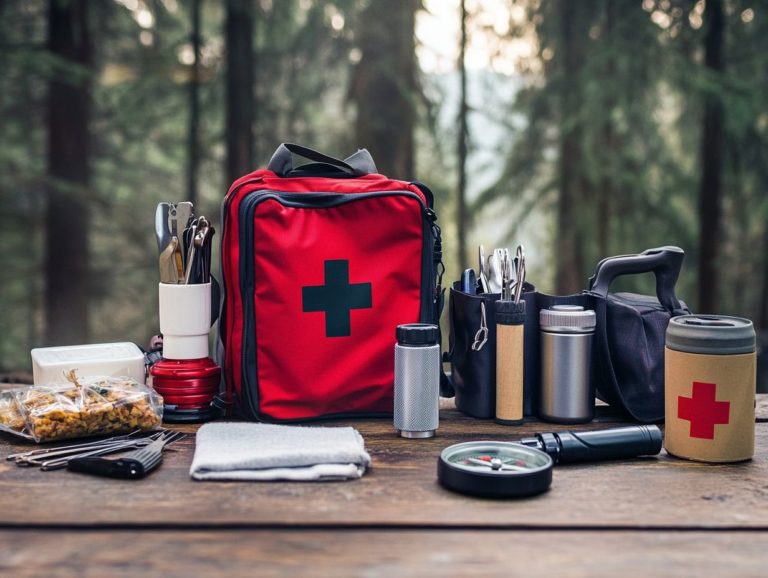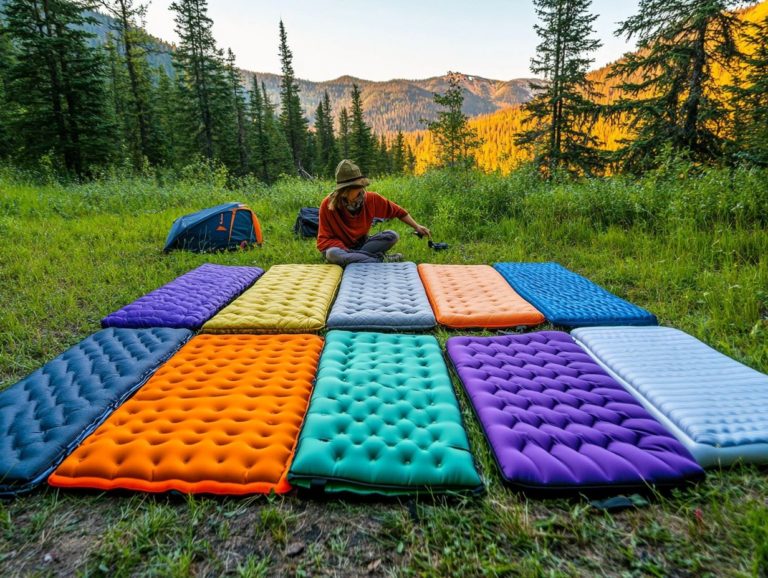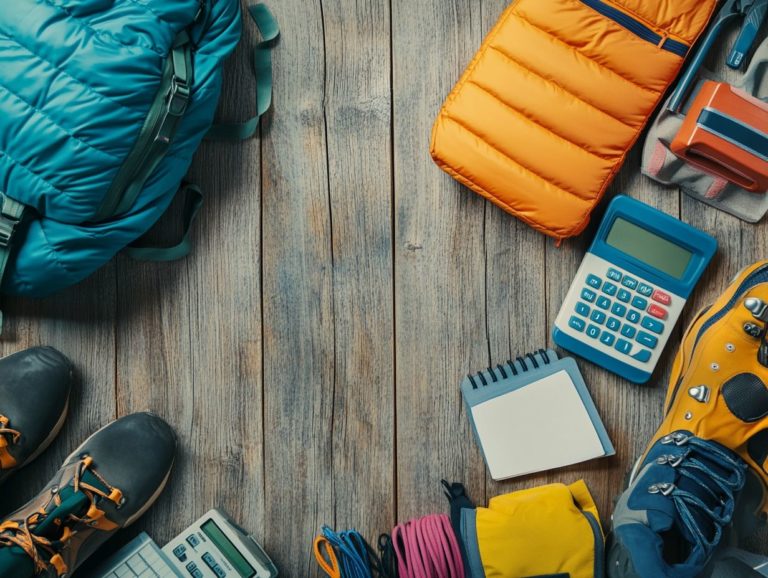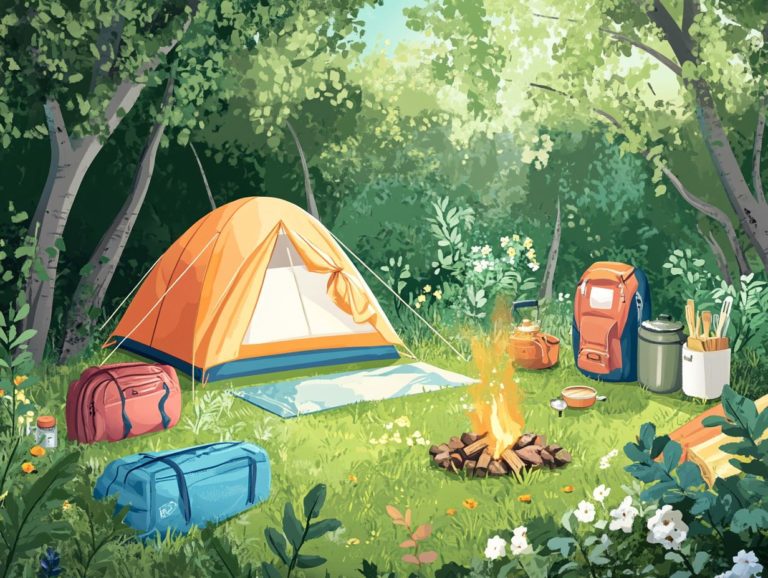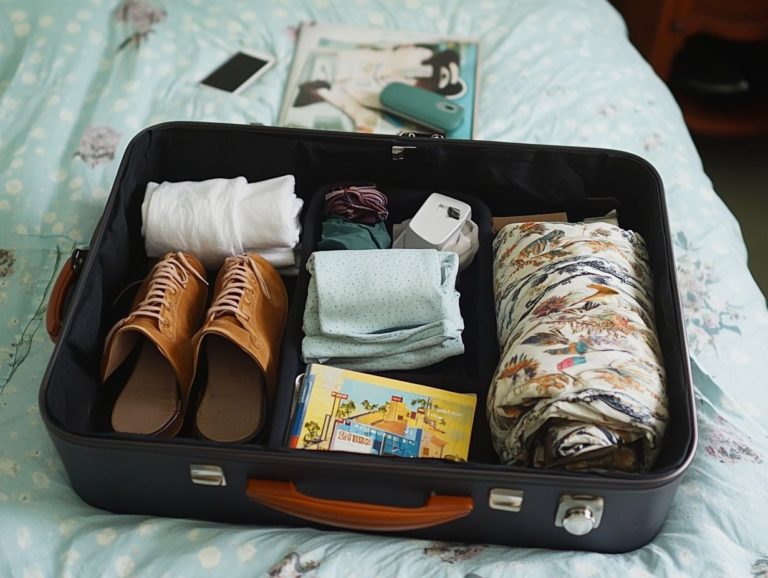How to Adapt Your Gear for Different Seasons?
As the seasons change, so do your requirements for gear and equipment. Whether you’re braving the chill of winter, basking in the summer sun, maneuvering through rainy days, or relishing the refreshing air of fall and spring, the importance of having the right gear cannot be overstated.
This article will delve into how you can evaluate your current gear and adapt it to meet the challenges of each season. From essential winter adjustments to lightweight summer alternatives and effective waterproofing techniques, you ll find guidance to ensure you re fully prepared for whatever nature decides to throw your way.
Contents
- Key Takeaways:
- Preparing for Seasonal Changes
- Adapting Gear for Winter
- Adapting Gear for Summer
- Adapting Gear for Rainy Seasons
- Adapting Gear for Fall and Spring
- Frequently Asked Questions
- What are some general tips for adapting gear for different seasons?
- How can I adapt my camping gear for different seasons?
- What types of clothing should I bring for different seasons?
- How should I adapt my hiking gear for different seasons?
- What should I consider when adapting my gear for winter?
- How can I adapt my gear for different seasons if I have a limited budget?
Key Takeaways:
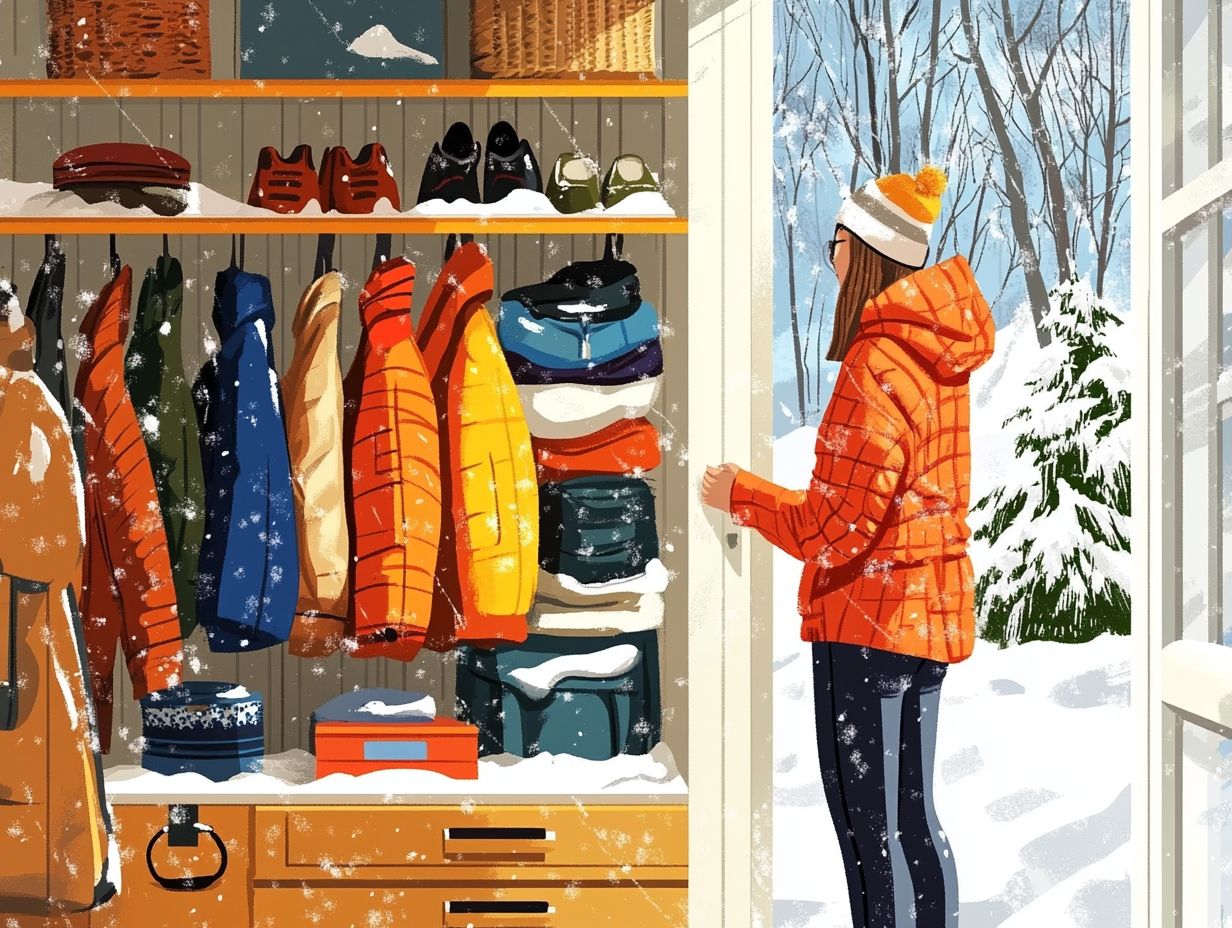
- Plan ahead by assessing your gear and needs for seasonal changes.
- Ensure you have essential winter gear like insulation and traction for slippery conditions.
- For summer, opt for lightweight and breathable gear to stay cool and comfortable.
Preparing for Seasonal Changes
Preparing for seasonal changes requires a strategic adjustment in your wardrobe. This ensures you maintain an adaptive and stylish balance for each upcoming season be it spring, summer, fall, or winter.
The essence lies in a thoughtful seasonal rotation. Take the time to assess your clothing categories and organize your pieces accordingly. This effectively minimizes closet clutter while maximizing your available space.
By employing smart storage techniques and utilizing climate-controlled units, you can preserve the integrity of your garments. This ensures you’re ready for whatever the weather decides to throw your way.
Assessing Your Gear and Needs
Assessing your gear and needs is essential for building a closet that works for you. This allows you to transition smoothly between in-between seasons.
This way, you can mix and match pieces effortlessly while showcasing your unique fashion statement. Start by evaluating your current clothing categories.
Take note of those essentials that can be layered or easily transformed with seasonal adjustments. Focus on versatile pieces, like lightweight cardigans or fitted turtlenecks, which can serve as foundational items for any outfit.
Regarding footwear, consider transitional options such as ankle boots or stylish sneakers. These can seamlessly carry you through both warm and cool weather.
As you curate your selections, draw inspiration from seasonal trends. For example, pairing a denim jacket with a slip dress in the fall creates a chic effect.
Try hosting a clothing swap with friends to breathe new life into your wardrobe. This approach simplifies your clothing management process while keeping your style fresh and exciting.
Adapting Gear for Winter
Adapting your wardrobe for winter is crucial to maintaining both warmth and style during the colder months. Start with choosing the proper winter attire pieces that layer effortlessly.
Essential Winter Gear and Modifications
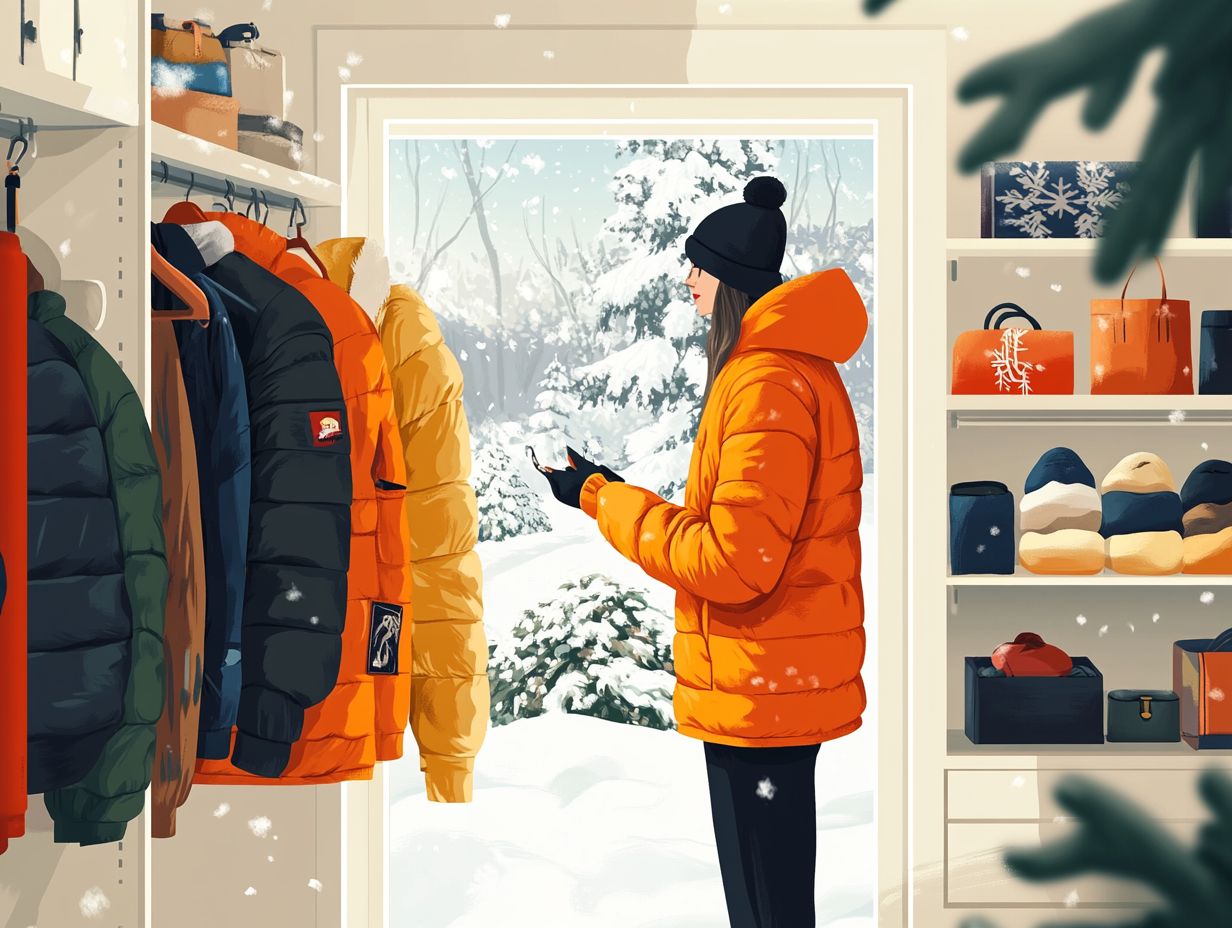
Essential winter gear comprises versatile pieces that you can easily layer. This enhances your wardrobe while allowing for playful texture combinations that exude a chic, warm aesthetic without sacrificing functionality.
Items like chunky knit sweaters, tailored long coats, and stylish insulated jackets enable you to craft a variety of outfits. These keep you cozy while elevating your style game.
Consider footwear options such as knee-high boots or sleek ankle boots. These not only provide warmth but also make a bold fashion statement.
Accessories like oversized scarves, wool beanies, and leather gloves don t just add flair; they also ensure your comfort during the chillier months.
By mixing and matching these essentials, you can embrace the winter season with sophistication and ease.
Adapting Gear for Summer
When adapting your gear for summer, prioritize lightweight and breathable options. These choices will not only keep you cool but also offer the versatility to create stylish outfits.
Your outfits can easily transition from casual gatherings to formal summer events. Embrace the season with elegance and comfort.
Start today! Check your wardrobe and prepare for the changing seasons.
Lightweight and Breathable Options
Choosing lightweight and breathable options is essential for your summer wardrobe. These choices let you enjoy the sun in style without sacrificing comfort.
When you select fabrics like linen, cotton, and rayon, you create a wardrobe that s not just fashionable but also practical for those hot summer days. Consider opting for:
- Flowing maxi dresses for those casual beach outings.
- Tailored linen shorts paired with a breezy button-up for brunch with friends.
Versatile jumpsuits can effortlessly take you from a day in the park to an evening gathering with just a quick change of accessories.
Adding lightweight wraps or cardigans for the evening is a clever way to adapt to varying temperatures while keeping your look polished and cohesive.
Adapting Gear for Rainy Seasons
Using waterproof gear and smart protection means staying dry and stylish, even in unexpected showers and damp conditions.
Waterproofing and Protection Strategies
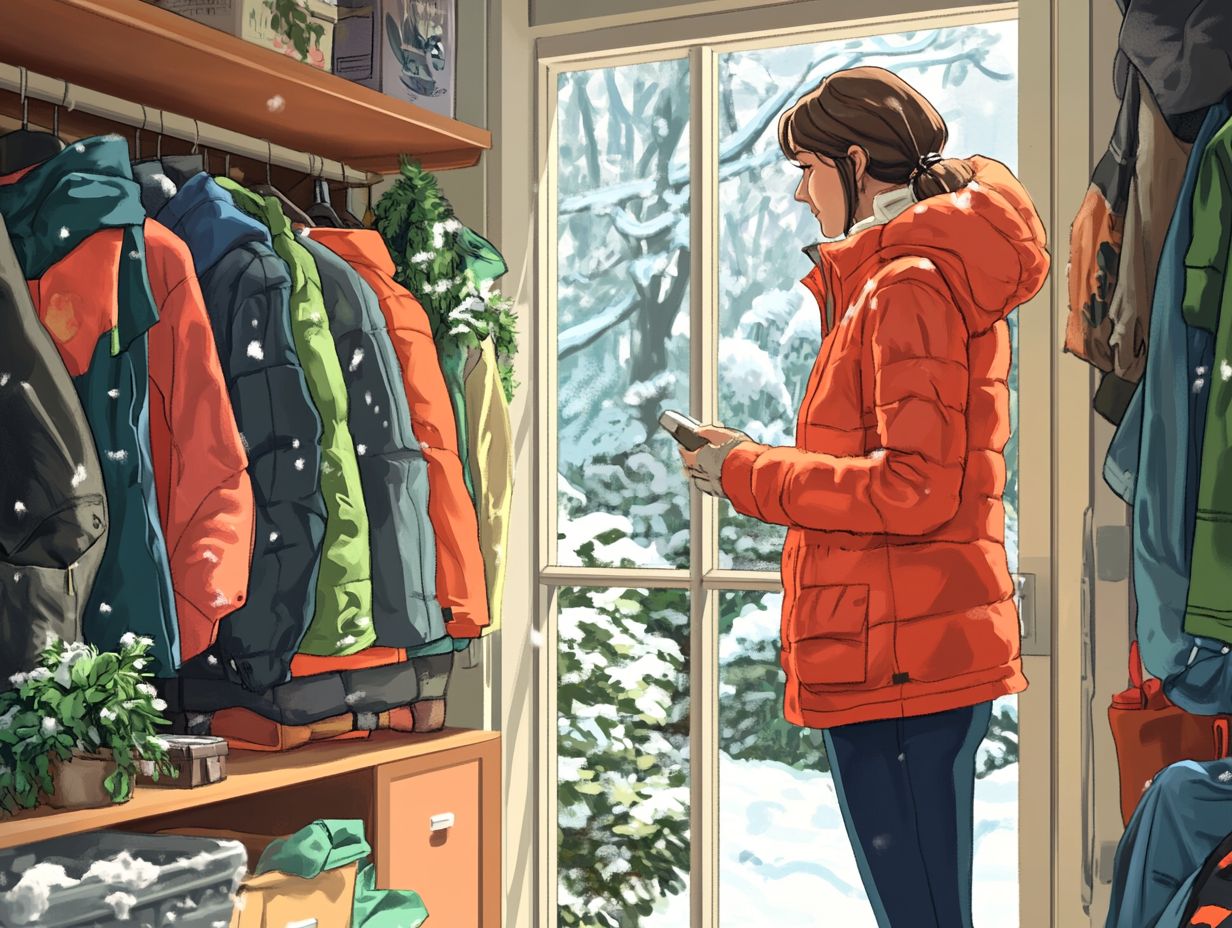
Implementing waterproofing techniques is essential for preserving your clothing and footwear during the rainy season. This ensures that the fabric remains intact while you maintain a fashionable look, even when the weather isn t cooperating.
Familiarize yourself with various methods to shield your favorite attire and accessories from the elements. Techniques like applying water-repellent sprays or seam sealing are crucial; they enhance durability while ensuring your garments remain functional.
Choose protective clothing to stay comfortable and dry outdoors. When selecting waterproof footwear, look for materials like Gore-Tex a breathable waterproof fabric that keeps your feet dry while looking good and rubber. These options provide excellent protection while seamlessly complementing your outfit, allowing for versatility and style even in less-than-ideal conditions.
Adapting Gear for Fall and Spring
Getting good at layering enables you to transition effortlessly between varying temperatures. This ensures you remain comfortable and stylish, regardless of unpredictable weather shifts.
Layering and Versatility for Changing Weather
Layering and versatility are key during the transitional seasons of fall and spring. They allow you to craft a variety of outfit inspirations that seamlessly adapt to any situation.
By thoughtfully combining clothing categories like lightweight tees, cozy sweaters, and stylish jackets, you can shift your look from day to night or warm to cool. This approach not only elevates your style but also fosters creativity in how you express yourself. When planning your outfits for outdoor adventures, consider consulting this guide on how to choose hiking gear for all seasons.
Adding accessories such as scarves and statement belts can elevate even the simplest outfits. Whether you re heading to a casual brunch or an evening event, you ll remain chic and practical.
Embracing these layering techniques maximizes your wardrobe s potential while making a distinct fashion statement. It showcases your grasp of seasonal trends and highlights your personal flair.
This video provides more tips on adapting your wardrobe for seasonal changes.
Frequently Asked Questions
What are some general tips for adapting gear for different seasons?

One important tip is to choose versatile, multi-purpose gear that can be used in various weather conditions. Layer your clothing for extra warmth, and invest in quality, weather-resistant materials to adapt gear for different seasons.
How can I adapt my camping gear for different seasons?
For camping gear, it is important to consider the temperature and weather conditions of the specific season. For colder seasons, insulated sleeping bags and tents, as well as portable heaters, can help keep you warm. For warmer seasons, lightweight and breathable materials are key.
Stay tuned for more tips to keep your wardrobe fresh each season!
What types of clothing should I bring for different seasons?
For colder seasons, it s essential to wear layers. This includes thermal base layers, fleece jackets, and waterproof outerwear.
How should I adapt my hiking gear for different seasons?
Consider the terrain and weather when choosing hiking gear. In colder seasons, waterproof and insulated boots are must-haves.
For warmer seasons, lightweight and breathable shoes are important. A hydration pack is also a great addition.
What should I consider when adapting my gear for winter?
When preparing for winter, think about the temperature and hazards like snow and ice. Hand warmers and grippers for shoes can keep you safe and cozy.
How can I adapt my gear for different seasons if I have a limited budget?
If your budget is tight, consider gear that works for multiple seasons. Look for sales on the items you need.
Renting gear for specific seasons can save you money, too!

